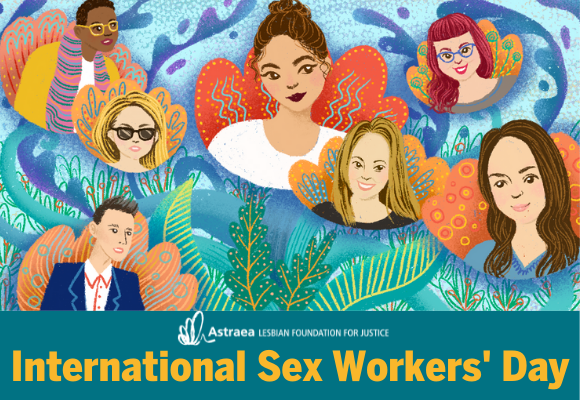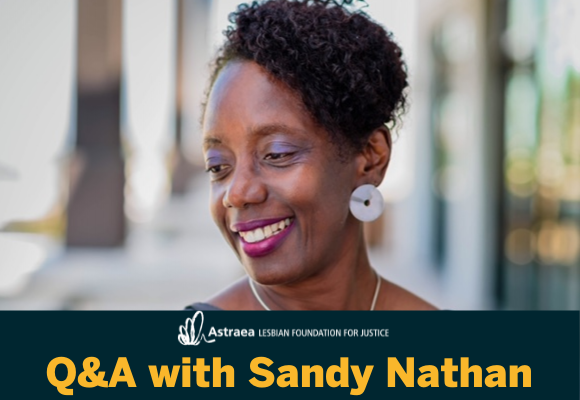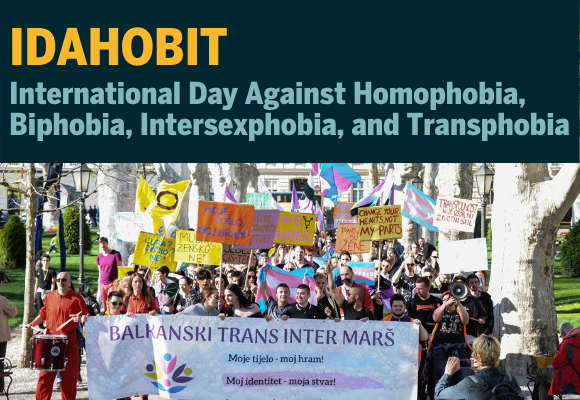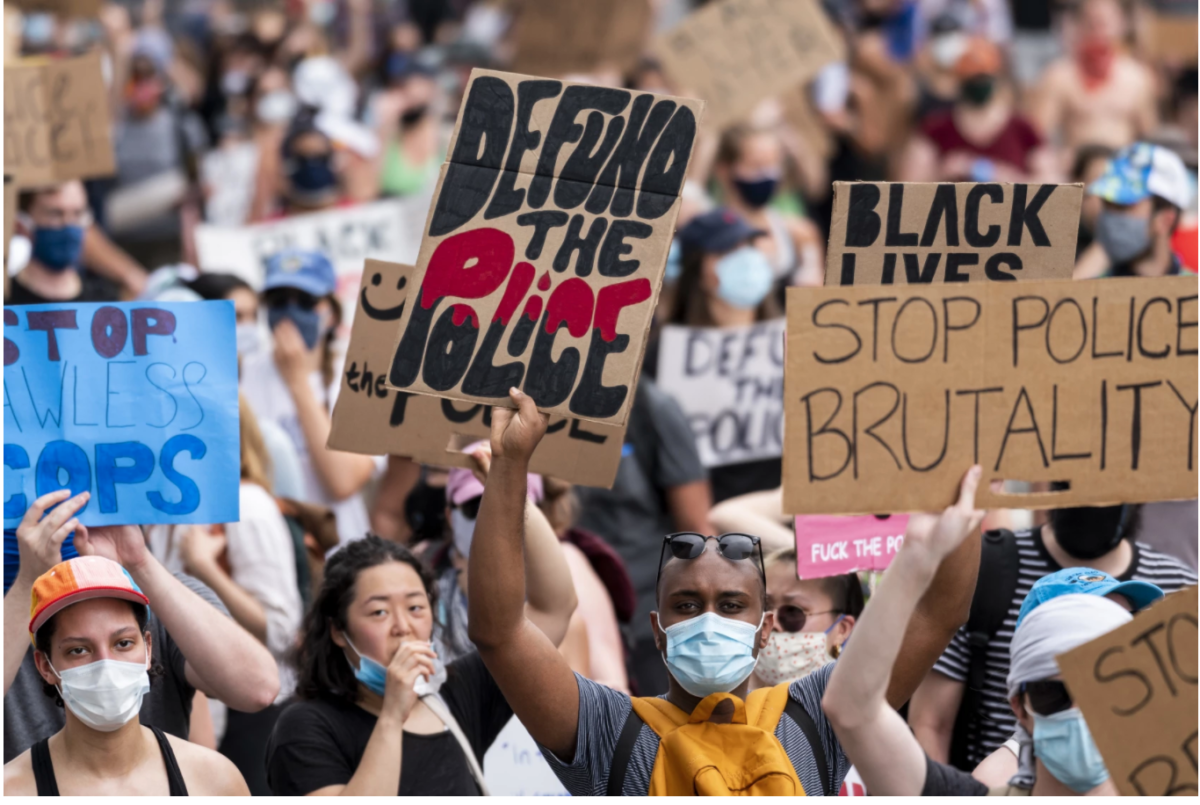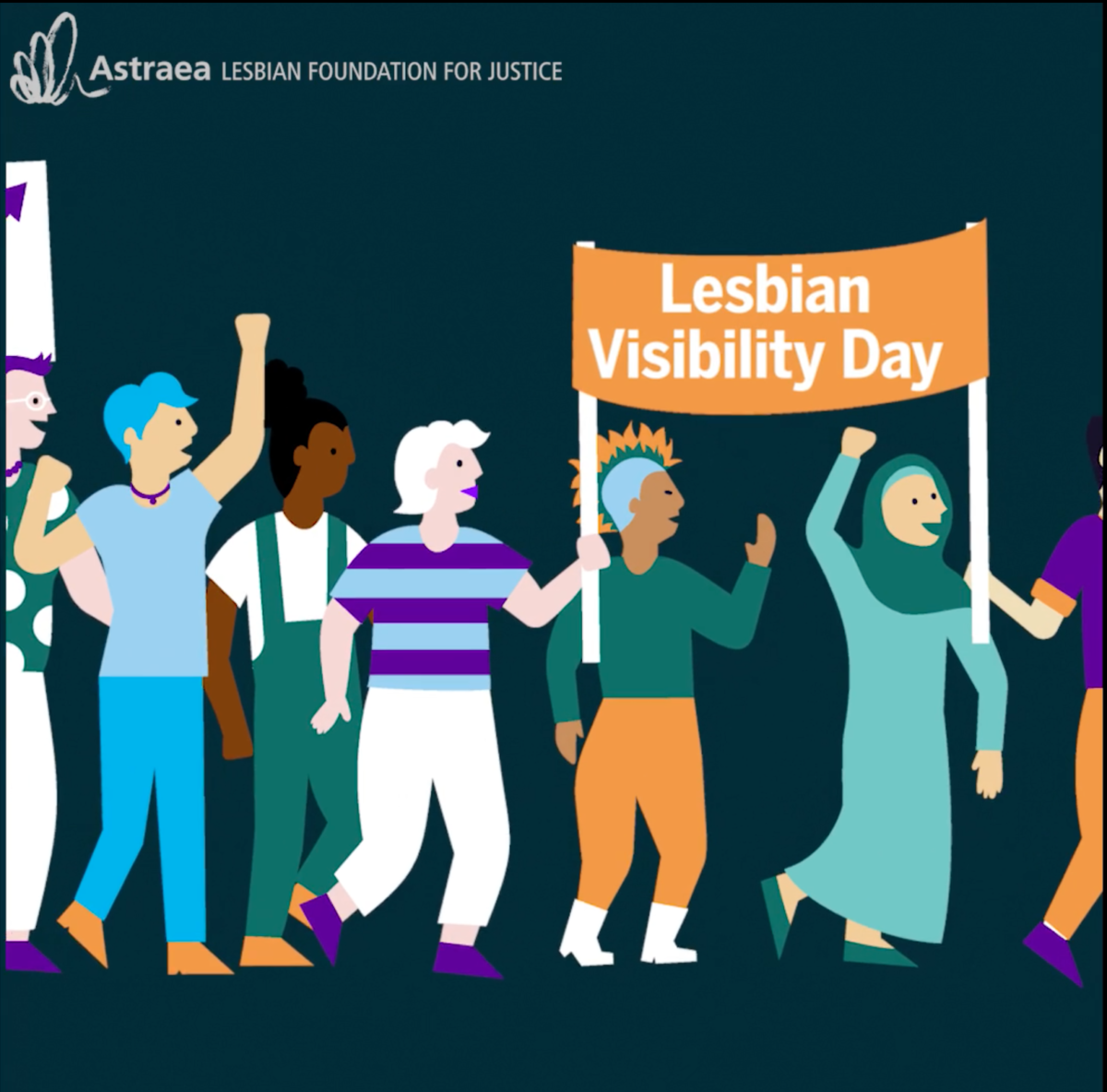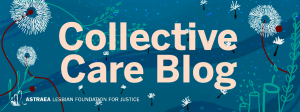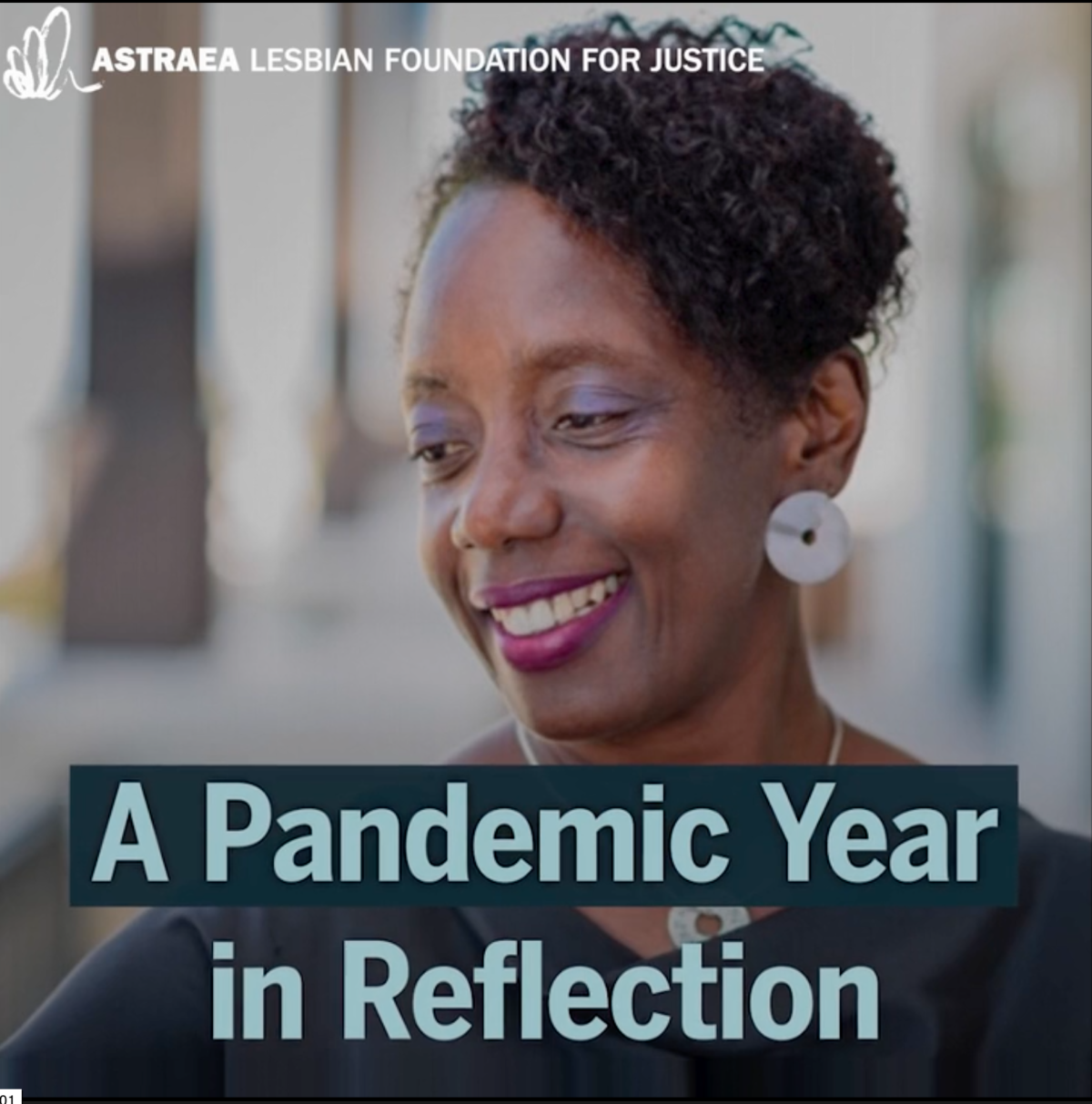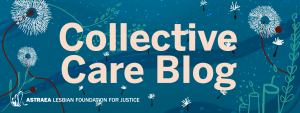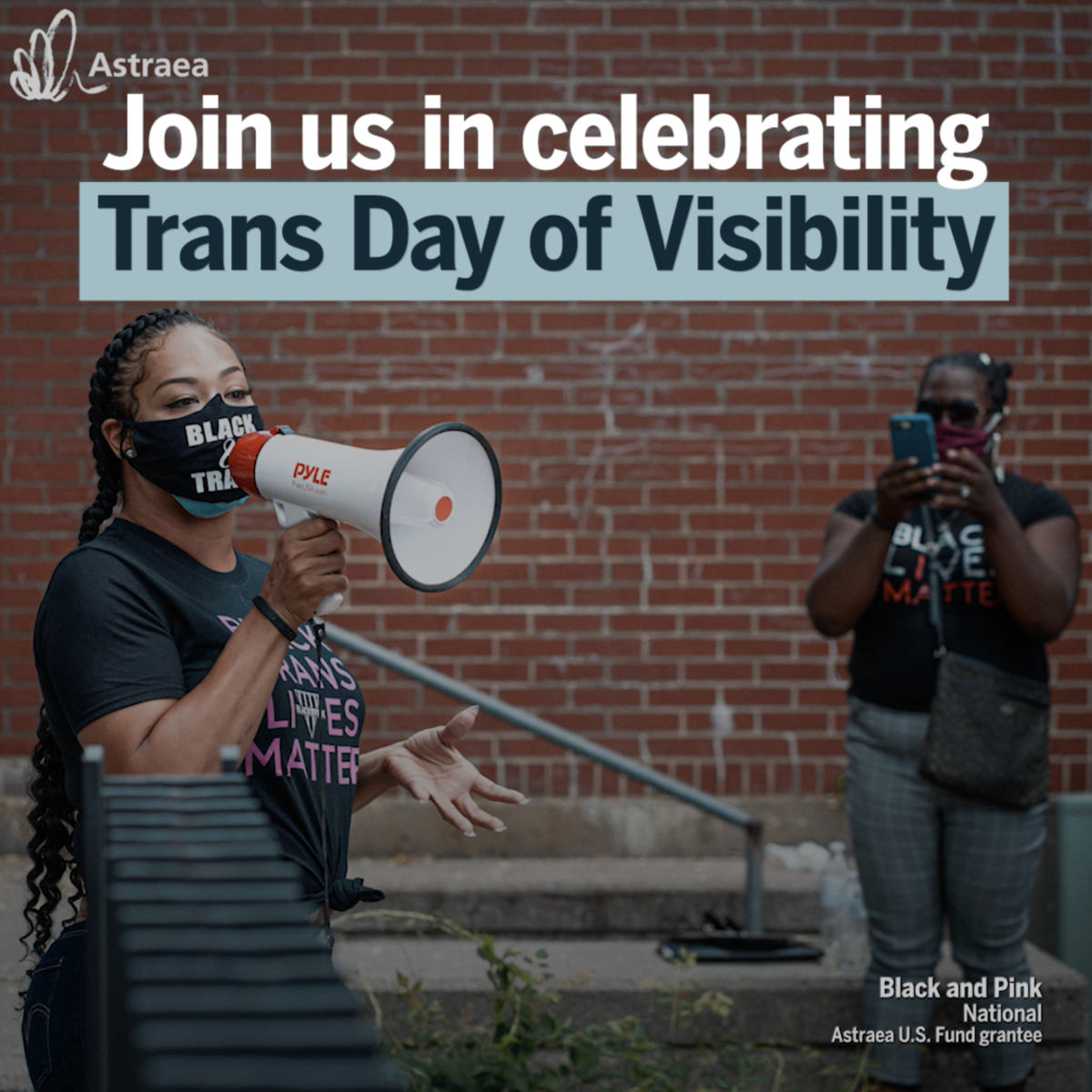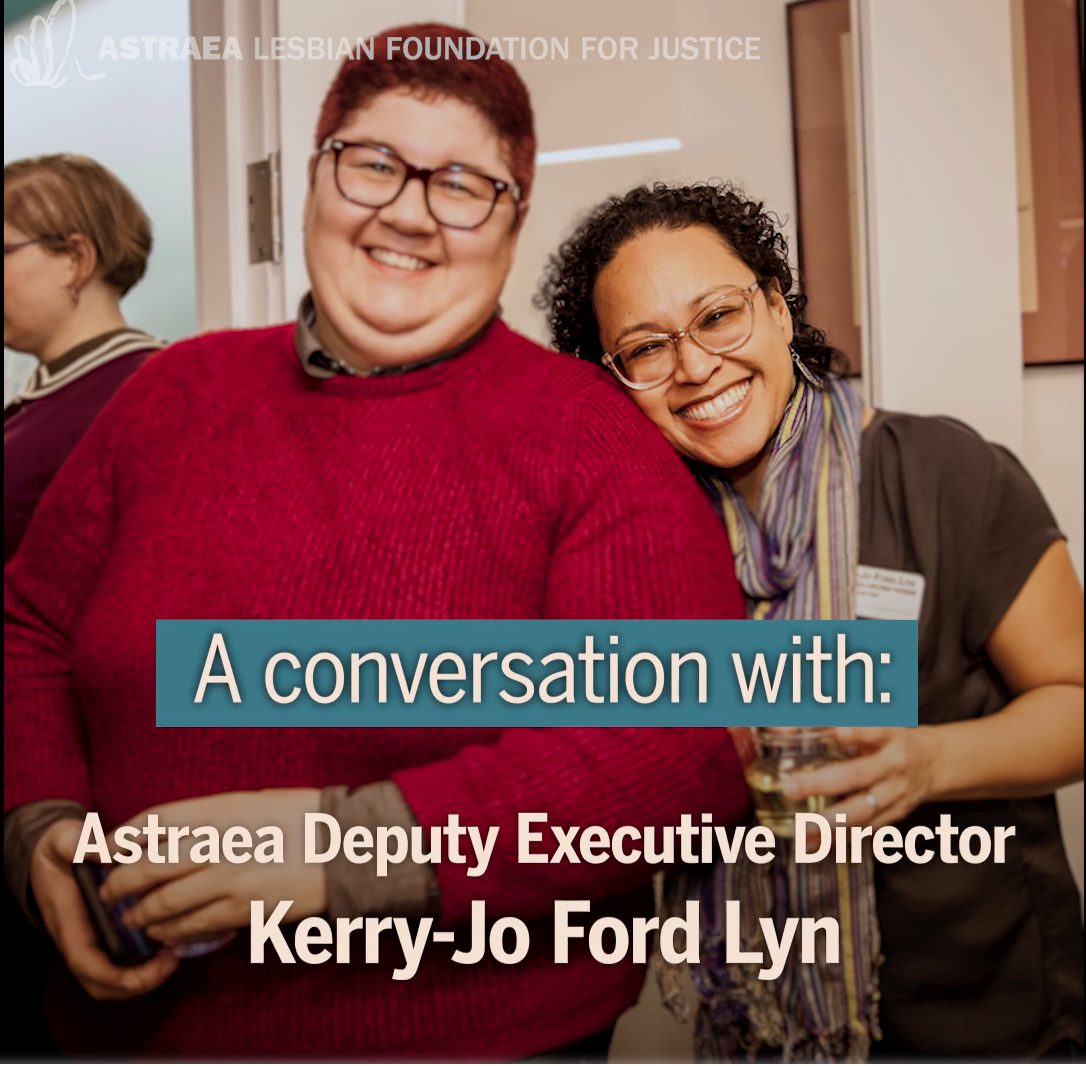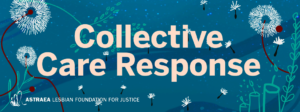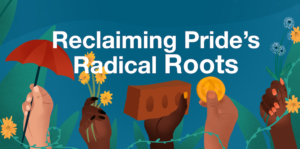
Our Pride – true to its roots – is a rebellion and an uprising of actions towards queer and trans liberation. It seeks to transform, rather than to assimilate. It looks towards Afro-futurism and queer and trans radical traditions that imagine liberation as a future where we all belong. Astraea’s vision for Pride is based in all we have learned from our global LGBTQI communities and movements over the past four decades.
Our Pride…
1. Honors the visions of our queer ancestors and elders, and has roots in rebellion and uprisings led by Black and Brown LGBTQIA people.
Led by Black and Latine queer and trans women like Marsha P. Johnson, Sylvia Rivera, Miss Major Griffin-Gracy, and so many others (who were organizing for queer liberation even prior to Stonewall), we are reminded that Pride began as a riot. Queer historian M.E. O’Brien writes, “The riots were initiated and led by the most marginalized of New York City’s working-class queers: homeless youth, Black and Puerto Rican trans women, sex workers, and visibly gender-nonconforming people. The riots catalyzed the most radical elements of the queer counterculture, previously rather marginal, and an explosive organizing energy spread across the country.” We adamantly believe that Pride must continue to be led by and for the communities who continue to be most impacted by discrimination, violence, gendered oppression, and injustice in all forms.
2. Is truly intersectional, inspired by the visions of Black, Brown, migrant, Indigenous, sex worker, disability justice, and Global South LBTQI feminist movements.
Rooted in the radical imaginations of trans and intersex people, bisexual and queer women, and non-binary people, pan, and asexual people, our Pride simultaneously lifts up our movements’ accomplishments and wins, and shines a spotlight on the many political, social, and cultural struggles still ongoing around the world. A liberatory Pride recognizes that all our struggles are interconnected and that LGBTQIA people are at the helm of multiple social movements. Therefore, our Pride is necessarily pro-climate, pro-abolition, pro-sex worker, pro-labor justice, pro-Indigenous sovereignty, pro-labor rights, pro-disability justice, pro-internationalism, and pro-Palestine. It is also anti-police, anti-prisons, anti-militarist, anti-capitalist, anti-occupation, anti-imperialist, and anti-white supremacist.
3. Celebrates Black and trans joy at the center of our fight for queer liberation, and uplifts care and healing justice as critical to our communities’ ability to survive and thrive.
Our Pride celebrates and centers Black and trans lives. Collective care is the heart of all we do and support. We acknowledge the historical and disproportionate impacts of violence, discrimination, and intergenerational trauma on our communities, and seek reparation for these harms. Healing justice means recognizing the importance of the survival practices which center the collective safety, joy, laughter, celebration, and wellbeing of our communities, and ensuring that our Pride encompasses them. We have learned from our grantee partners how these practices and traditions can be tools for building power, and how they can deepen and sustain the long and hard work of movement-building.
4. Is fiercely abolitionist; it rejects the policing, surveillance, and criminalization of our communities and uplifts care and the wellbeing of our communities.
Following the lead of Black and trans-led abolitionist movements, the political vision of our Pride prioritizes eliminating systems that imprison, criminalize, surveil, and police our people and our bodies. Our Pride demands lasting alternatives, based on our communities’ safety and wellbeing, and prioritizes investing in public housing, employment, education, access to food and healthcare, and community resourcing for our people.
Pride began as a rebellion against the police. Therefore our Pride necessarily excludes the police, law enforcement, and the use of violent surveillance technologies at any actions and uprisings. As Roxane Gay writes “For decades, the police have tormented our communities. They enforced laws about how we dressed, where we congregated and whom we had sex with. They beat us, blackmailed us and put us in jail.”
5. Condemns the dehumanization of LGBTQI people, the depoliticization of our causes, and the homogenization of our identities and struggles.
Resistance, action, and political urgency to bring justice for all our people is at the forefront of our Pride. Our Pride does not lose sight of the many struggles our people continue to face and resist: an ongoing global pandemic, police brutality and systemic racism, anti-immigrant laws and sentiments, threats to indigenous land and ways of living, the rise of authoritarianism globally, rollbacks of trans rights and access to healthcare, the closing of civil society, climate collapse, and more. Pride has always been political, and we will fight to keep it that way.
6. Proclaims LGBTQI peoples’ bodily autonomy, self-determination, and diverse gender expressions and sexualities.
Bodily autonomy – the ability to make decisions about our bodies and how we choose to live in them with dignity and pride, and without judgment – is critical to our collective liberation. Disability justice, kink, fat liberation, and Black and trans bodies arecentered and visibilized. Pride must continue to make visible kink, queer erotic desire, and queer love; the very things that queer communities have for so long been criminalized and vilified for.
Our Pride must therefore ensure that people can live genuinely, authentically, freely and joyfully in their identities, their bodies, and their sexualities. We actively protest the systemic erasure and discrimination of our people and their bodies, and protect trans people and LGBTQI people of colors’ right to accessing gender affirming care, HIV treatments, and reproductive and sexual health.
Pride is incomplete if it does not amplify a diverse spectrum of gender expressions. Here, we are reminded of Emi Koyama’s words in the Transfeminist Manifesto: “Transfeminism believes that we construct our own gender identities based on what feels genuine, comfortable and sincere to us as we live and relate to others within given social and cultural constraint….instead of justifying our existence through reverse essentialism, transfeminism dismantles the essentialist assumption of the normativity of the sex/gender congruence.”
7. Rejects rainbow capitalism – we will NOT allow our movements and ourselves to be co-opted, complicit, or silent.
As a public foundation that works to re-allocate money and resources to redistribute power to our people and our movements, we take a stand within philanthropy against the problematics of corporate Pride and work to ensure that resources are re-invested in grassroots, LGBTQI actions and uprisings.
Many modern day Pride marches and celebrations have been taken over by cis, capitalist, white institutions whose primary goal is to seek profit from our identities and struggles. We resoundingly reject this rainbow capitalism, the pinkwashing of our movements, and the co-option of liberatory movements for capital gain. Instead, our vision for Pride works to shed the shackles of capitalism that would profit off our bodies, through a return to the grassroots.
8. Uplifts Pride actions that are truly radical, political, and liberatory, and are committed to the sovereignty of the Indigenous people on whose land they take place.
The original Pride marches combined radical politics, kink, and celebration. They provided visibility to LGBTQI communities and were an opportunity for queer communities to voice their demands and spotlight the needs and struggles of queer communities. In the 1980s, the culture around Pride began to shift, with less radical activists moving to the forefront, and many Pride actions dropping words like “freedom” and “liberation” from their names. Today, many state-sponsored Pride marches draw millions of people around the world, but do not center those in LGBTQI communities most impacted by discrimination.
We stand by our communities in the belief that Pride must return to its roots as a protest, and a call to action for justice and joy for our people. We are so proud of the ways our communities have worked to reclaim Pride actions over the last several years, and to fight for Pride actions that are free from policing, violence, transphobia, and intersexphobia. Just a few examples of these truly liberatory Pride actions include: The Queer Liberation March, Dyke Marches, the March for Black Trans Lives, Zagreb Pride, and Soweto Pride.
9. Recognizes that the struggle for queer liberation is ongoing, we stand with our movements not just in June, but 365 days of the year.
Our grantee partners work day in and day out to realize liberation, collective care, and healing for their people. It is therefore our commitment to them that we will always act on our responsibility as a feminist philanthropic institution to amplify, resource, and support the LBTQI organizations, movements, and communities who are not always heard or visibilized during Pride month, or at all.
Join us! Check out the work of our powerful grantee partners in our 2020 Annual Report, and on our Twitter, Facebook, and Instagram pages. As you are able to, we encourage you to consider becoming a monthly donor to Astraea, ensuring that our grantee partners around the world are supported and celebrated 365 days a year.

